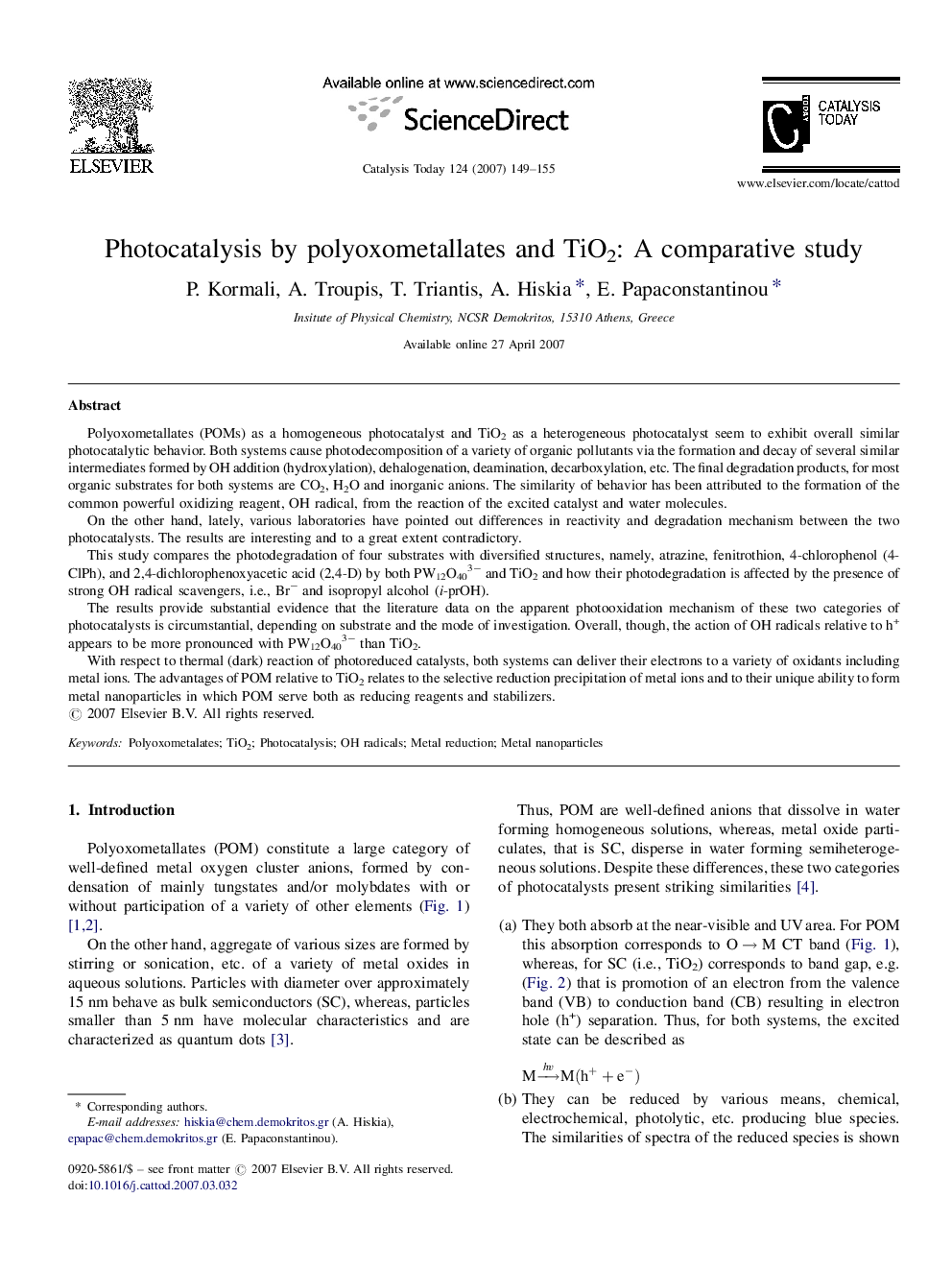| کد مقاله | کد نشریه | سال انتشار | مقاله انگلیسی | نسخه تمام متن |
|---|---|---|---|---|
| 58116 | 47142 | 2007 | 7 صفحه PDF | دانلود رایگان |

Polyoxometallates (POMs) as a homogeneous photocatalyst and TiO2 as a heterogeneous photocatalyst seem to exhibit overall similar photocatalytic behavior. Both systems cause photodecomposition of a variety of organic pollutants via the formation and decay of several similar intermediates formed by OH addition (hydroxylation), dehalogenation, deamination, decarboxylation, etc. The final degradation products, for most organic substrates for both systems are CO2, H2O and inorganic anions. The similarity of behavior has been attributed to the formation of the common powerful oxidizing reagent, OH radical, from the reaction of the excited catalyst and water molecules.On the other hand, lately, various laboratories have pointed out differences in reactivity and degradation mechanism between the two photocatalysts. The results are interesting and to a great extent contradictory.This study compares the photodegradation of four substrates with diversified structures, namely, atrazine, fenitrothion, 4-chlorophenol (4-ClPh), and 2,4-dichlorophenoxyacetic acid (2,4-D) by both PW12O403− and TiO2 and how their photodegradation is affected by the presence of strong OH radical scavengers, i.e., Br− and isopropyl alcohol (i-prOH).The results provide substantial evidence that the literature data on the apparent photooxidation mechanism of these two categories of photocatalysts is circumstantial, depending on substrate and the mode of investigation. Overall, though, the action of OH radicals relative to h+ appears to be more pronounced with PW12O403− than TiO2.With respect to thermal (dark) reaction of photoreduced catalysts, both systems can deliver their electrons to a variety of oxidants including metal ions. The advantages of POM relative to TiO2 relates to the selective reduction precipitation of metal ions and to their unique ability to form metal nanoparticles in which POM serve both as reducing reagents and stabilizers.
Journal: Catalysis Today - Volume 124, Issues 3–4, 30 June 2007, Pages 149–155